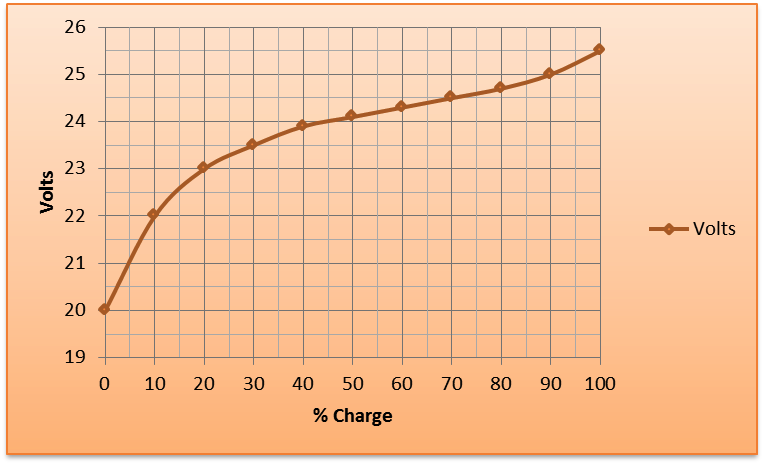Battery Discharge: solar battery bank discharge explained
Discover five reasons why Battery Discharge occurs and learn to understand the Battery Discharge Curve and the different Charge Stages of a solar battery.
What is Battery Discharge?
A battery is an electrical component that is designed to store electrical charge (or in other words - electric current) within it. Whenever a load is connected to the battery, it draws current from the battery, resulting in battery discharge. Battery discharge could be understood to be a phenomenon in which the battery gets depleted of its charge. Greater the current drawn by the load, faster the battery discharges.
Battery discharge during idle status?
Battery discharge also occurs when the battery is idle. A battery is said to be idle when it is still connected to the load, but there is no current being drawn from it. The voltage of a lead acid battery when idle (not supplying current or being charged) will vary according to how fully charged the battery is. The graph shown below represents the discharge characteristics (voltage versus charged percentage) of a typical 24 V lead acid battery, which has not been charged or had current drawn from it for few hours. Figure 1: Typical discharge curve (voltage versus % charge) for a 24 volt lead acid battery.
Explanation discharge curve
For the 24V lead acid battery example shown in figure 1, a battery which is 100% charged will have an output voltage of around 25.6 volts. At 50% charged stage, the output voltage of the battery is around 24V. Once the battery is 30% discharged, the discharge rate of the battery picks up sharply to a complete discharge.
 Solar battery discharge curve for a 24V lead acid battery
Solar battery discharge curve for a 24V lead acid battery
The followings could be observed from the above graph:
- Range between 80% to 100% yields above rated output voltage, but the voltage drops quickly. The battery could be charged up to 100% if the load requires a voltage boost for a short amount of time.
- Range between 40% and 80% is the most stable range (approximately 0.5 Volt drop). It means that in this range, the battery will slowly discharge and will yield the rated output voltage.
- Range between 40% to 0% is the most unstable zone and it witnesses a sudden drop of voltage. The battery shall not be ideally operated in this range. Operation of battery in this range could harm the battery and significantly reduce its life. It’s common for an inverter to be programmed in such a way that the battery will be disconnected when the output voltage is around 22 volts.
Battery discharge characteristics
Different types of batteries (and sometimes, even the same type) show different discharge characteristics. In general, the parameters governing the discharge cycle of the batteries are:
- The operating temperature
- Rating of the connected load
- Materials used in manufacturing the batteries
- Maintenance of the batteries
- Charging / discharging cycle

Rob
on 19 Apr 2022Donald
on 05 Jun 2021Henry
on 21 Feb 2022Mpho
on 04 Feb 2022Adewale
on 26 Apr 2018Phil
on 29 Apr 2018Tom
on 19 Dec 2018Dexter
on 04 Oct 2018